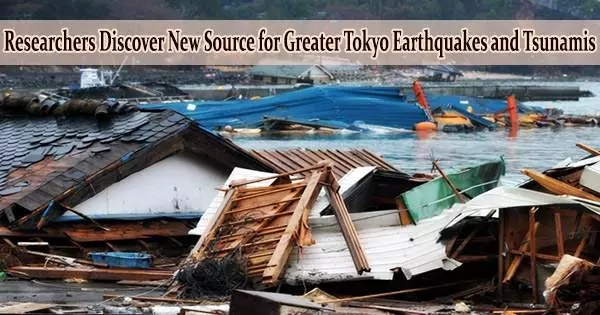Geologists have found proof that particularly large earthquakes and tsunamis from the Tokyo area, which are known to be a seismic hazard source near tectonic plate borders, may be traceable to a hitherto unconsidered plate boundary.
Jessica Pilarczyk, an Earth scientist at Simon Fraser University, led the team that published their findings in Nature Geoscience today. The groundbreaking finding by the team entails a fresh and unanticipated earthquake risk for Japan, with repercussions for nations bordering the Pacific, including Canada.
Pilarczyk points to low-lying areas like Delta, Richmond, and Port Alberni as potentially vulnerable to tsunamis originating from this region.
The biggest rupture area of any earthquake that originated from the Japan Trench was produced by a powerful magnitude 9 earthquake that struck eastern Japan in 2011. It caused the Fukushima Daiichi nuclear disaster and a tsunami that impacted the coastlines of British Columbia, California, Oregon, Hawaii, and Chile from thousands of miles distant.
Pilarczyk has been researching Japan’s distinct geologic history for the past ten years with the help of an international team of partners. Together, they uncovered and analyzed sandy deposits from the Boso Peninsula region (50 km east of Tokyo) that they attribute to an unusually large tsunami that occurred about 1,000 years ago.
Scientists have now discovered that a section of the Philippine Sea/Pacific plate border close to the Boso Peninsula is capable of producing enormous tsunamis that are comparable in size to the Tohoku disaster in 2011.
Earthquake hazard assessments for the Tokyo region are complicated by the ‘trench-trench triple junction,’ where the oceanic Philippine Sea Plate not only underthrusts a continental plate but is also being subducted by the Pacific Plate. Great thrust earthquakes and associated tsunamis are historically recognized hazards from the Continental/Philippine Sea (Sagami Trough) and Continental/Pacific (Japan Trench) plate boundaries but not from the Philippine Sea/Pacific boundary alone.
Jessica Pilarczyk
Using a combination of radiocarbon dating, geologic and historical records, and paleoecology, the team used 13 hypothetical and historical models to assess each of the three plate boundaries, including the Continental/Philippine Sea plate boundary (Sagami Trough), the Continental/Pacific plate boundary (Japan Trench) and the Philippine Sea/Pacific plate boundary (Izu-Bonin Trench) as sources of the 1,000-year-old earthquake.
Pilarczyk reports that the modeled scenarios suggest that the source of the tsunami from 1,000 years ago originated from the offshore area off the Boso Peninsula the smallest of which (for example, possible earthquakes with the lowest minimum magnitude), are linked to the previously unconsidered Izu-Bonin Trench at the boundary of the Philippine Sea and Pacific plates.
“Earthquake hazard assessments for the Tokyo region are complicated by the ‘trench-trench triple junction,’ where the oceanic Philippine Sea Plate not only underthrusts a continental plate but is also being subducted by the Pacific Plate,” says Pilarczyk, an assistant professor of Earth sciences at SFU who holds a Canada Research Chair in Natural Hazards.
“Great thrust earthquakes and associated tsunamis are historically recognized hazards from the Continental/Philippine Sea (Sagami Trough) and Continental/Pacific (Japan Trench) plate boundaries but not from the Philippine Sea/Pacific boundary alone.”
Pilarczyk hopes that these findings will be used to produce better-informed seismic hazard maps for Japan. She adds that distant regions, such as Canada, may use this knowledge to improve building standards and emergency response plans that would lessen the devastation caused by an earthquake similar to the one that occurred 1,000 years ago.





